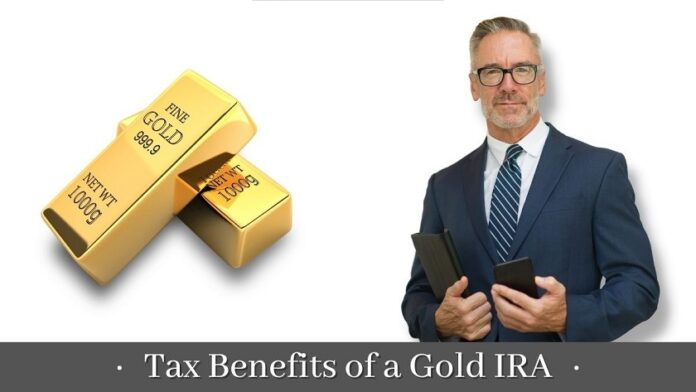An Individual Retirement Account (IRA) is a cornerstone of many individuals’ retirement strategies. With the diverse range of IRA options available today, one of the more interesting choices is a Gold Individual Retirement Account (Gold IRA). As a type of self-directed IRA, a Gold IRA allows for investment in precious metals like gold, providing an excellent hedge against market volatility and inflation. But beyond these advantages, Gold IRAs also come with unique tax benefits that can significantly contribute to wealth accumulation. This article will dive into the tax advantages of a Gold IRA and how they can bolster your retirement savings.
1. Tax Deductibility:
Traditional Gold IRAs operate on a tax-deferred basis. This means that contributions you make to your Gold IRA may be tax-deductible in the year you make them, depending on your income level and whether you or your spouse are covered by a retirement plan at work. In other words, you could potentially lower your current taxable income by investing in a Gold IRA, allowing you to save on taxes now while preparing for your retirement. It’s important to note, however, that these deductions are subject to the same limits as traditional IRAs.
2. Tax-Deferred Growth:
One of the most attractive tax benefits of a Gold IRA is that it provides tax-deferred growth. As long as your gold remains in your IRA, you won’t pay any taxes on the profits from the sale of the gold or any other earnings within the account. This tax deferment allows your investment to grow unhindered, compounding over time to potentially result in more substantial growth than if you were to pay taxes on the earnings each year.
3. No Capital Gains Tax:
When you buy and sell gold within a Gold IRA, you are not subject to capital gains tax. This is a significant benefit, as the capital gains tax can be quite hefty on physical gold investments outside of an IRA. If you were to sell gold for a profit outside of your IRA, you would have to pay capital gains tax on your earnings. However, within a Gold IRA, these transactions are protected from such taxation, providing an excellent avenue for tax-free gold trading.
4. Tax-Free Distributions (Roth Gold IRA):
If you opt for a Roth Gold IRA, you make contributions with post-tax dollars. While this means you won’t get a tax deduction on your contributions, it does offer a very appealing benefit: tax-free distributions in retirement. As long as you meet certain requirements (like being 59.5 years old and having had the Roth IRA for at least five years), you can withdraw your gold profits tax-free. This can be incredibly beneficial, as it means you won’t have to factor taxes into your retirement withdrawal strategy.
While these tax benefits make Gold IRAs attractive, it’s essential to understand the rules surrounding these accounts to avoid unintended tax consequences. For instance, withdrawing from your Gold IRA before age 59.5 may incur taxes and penalties, and failure to take required minimum distributions (RMDs) from a traditional Gold IRA after reaching age 72 can also result in tax penalties.
Working with a reputable Gold IRA custodian can help you navigate these rules and maximize the tax benefits of your Gold IRA. As with any investment decision, it’s also crucial to consult with a tax professional or financial advisor to ensure that investing in a Gold IRA aligns with your overall retirement strategy and financial goals.








